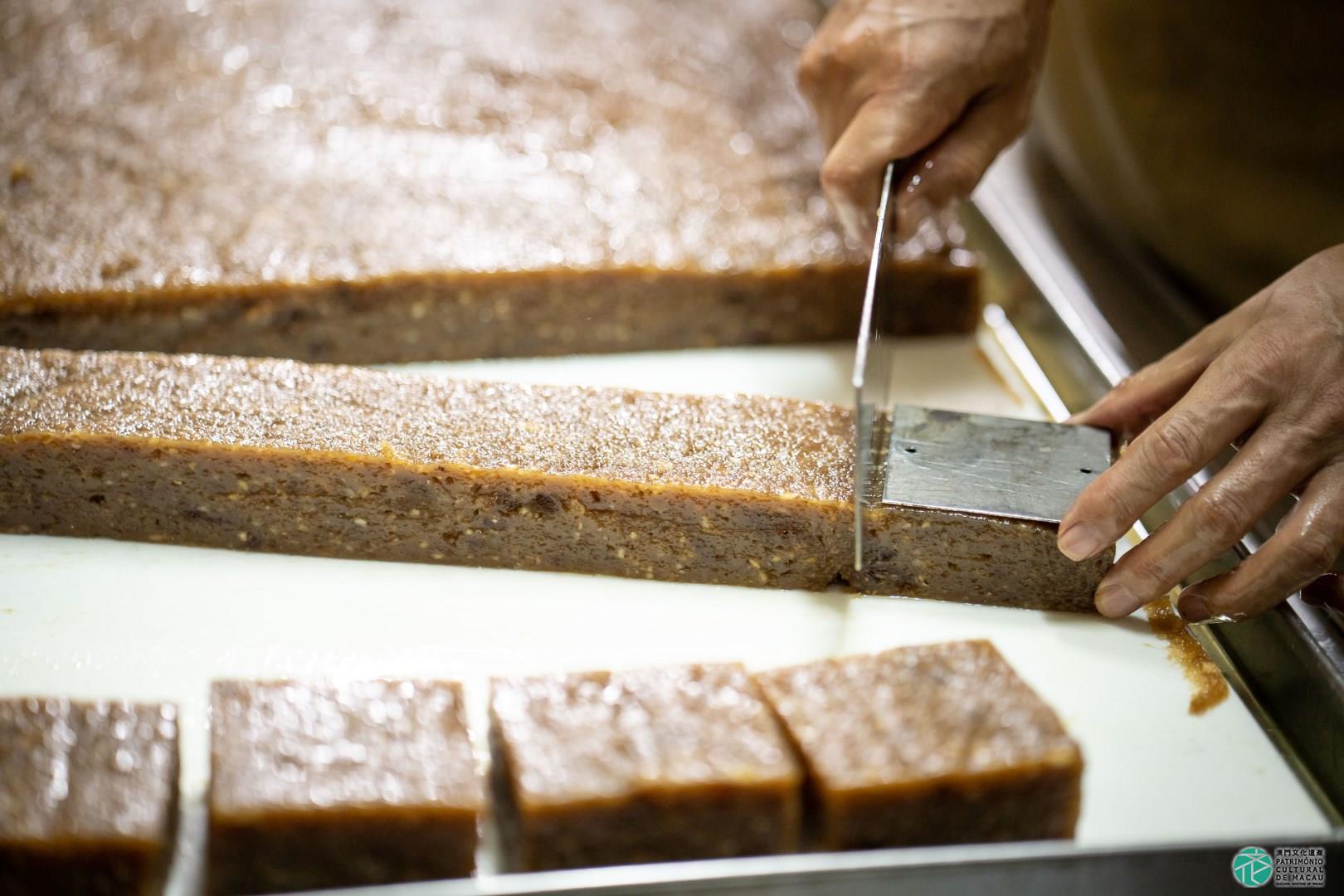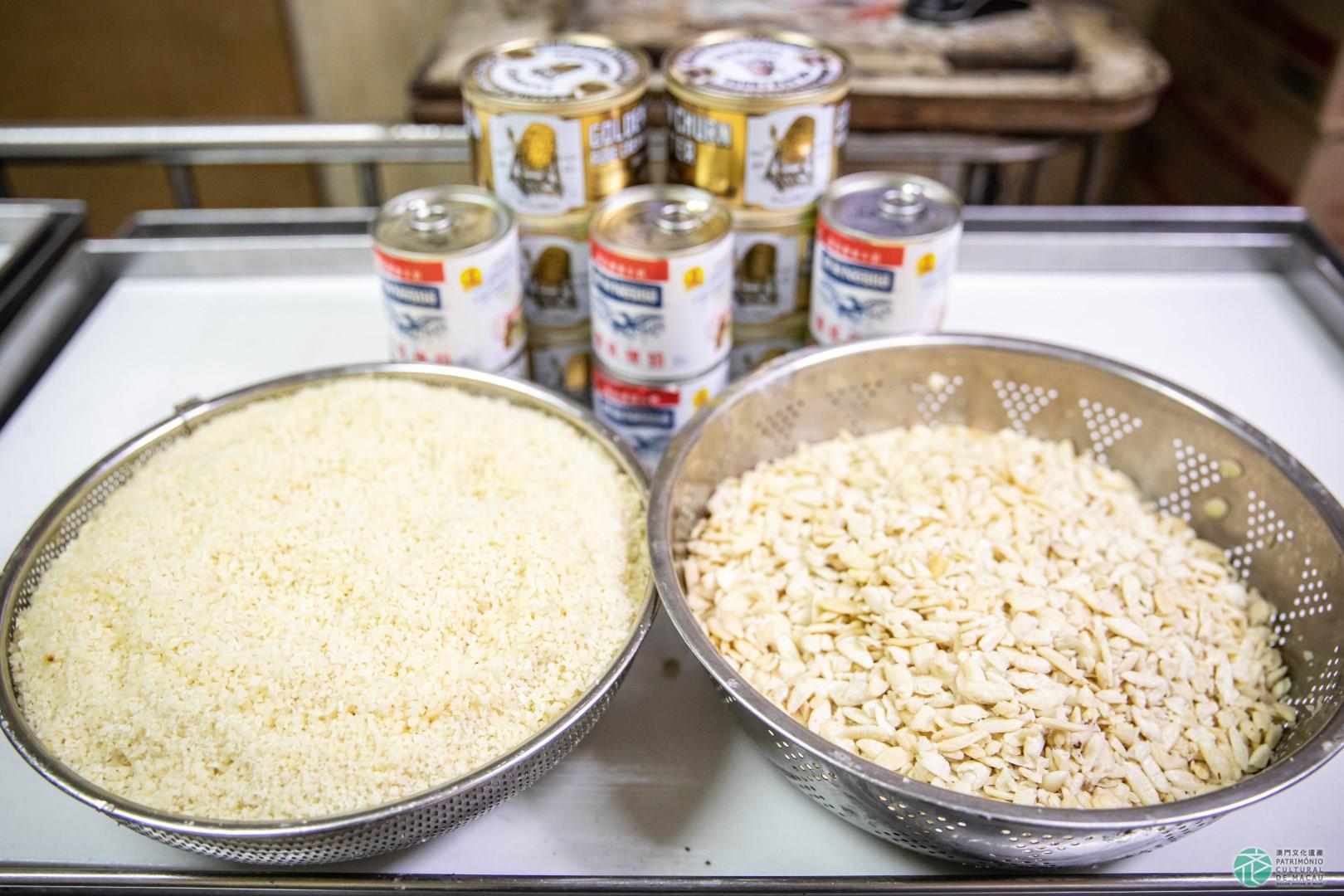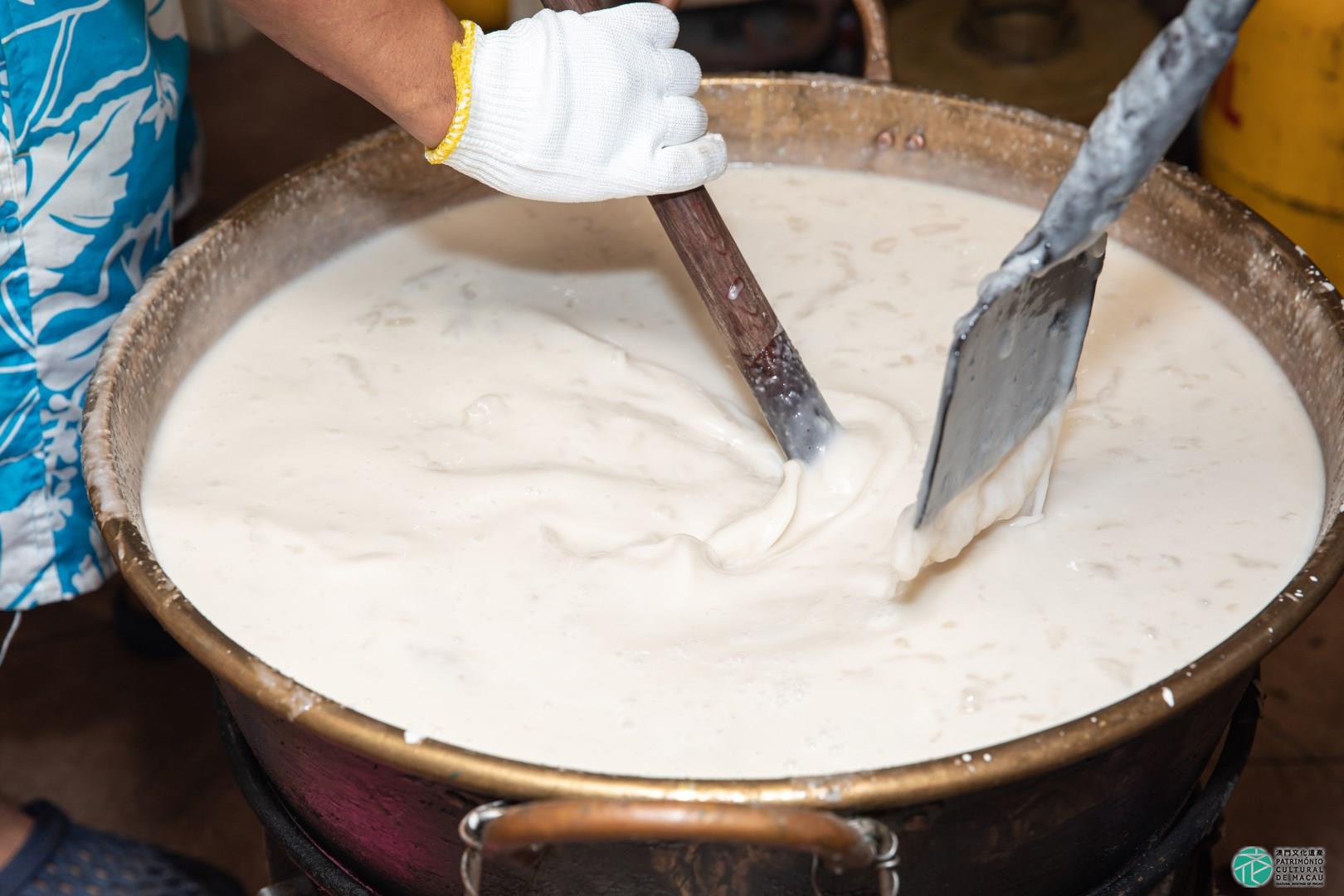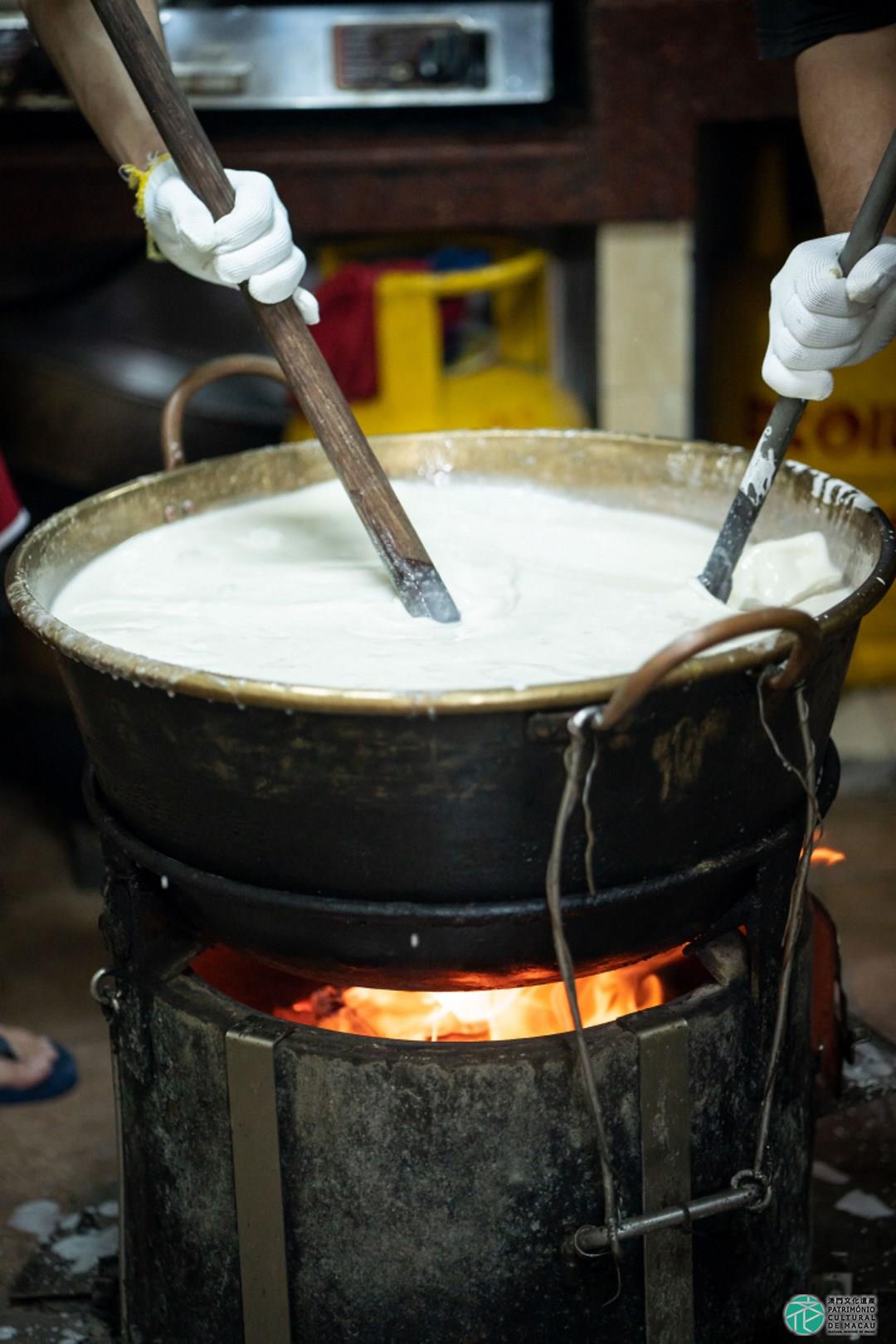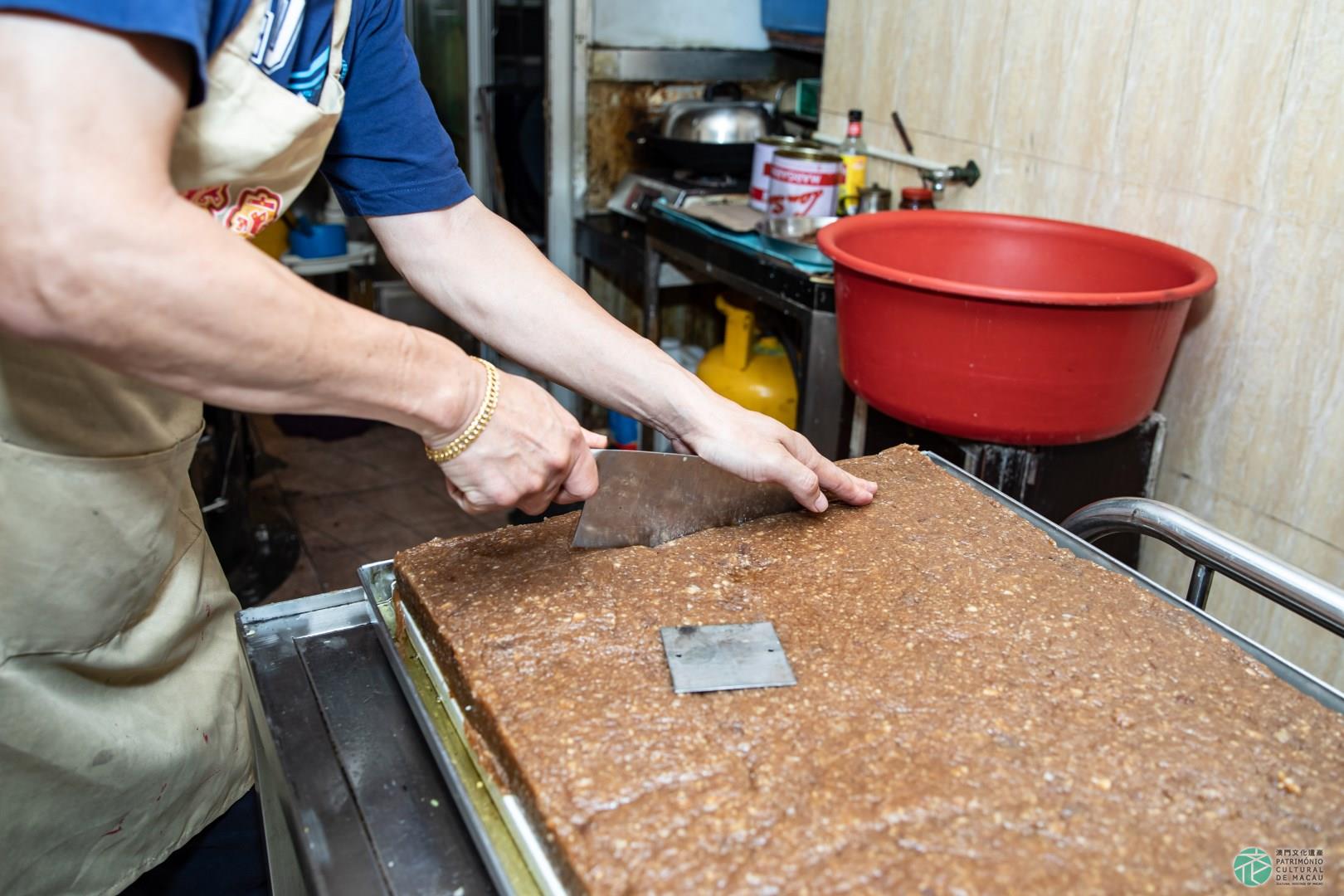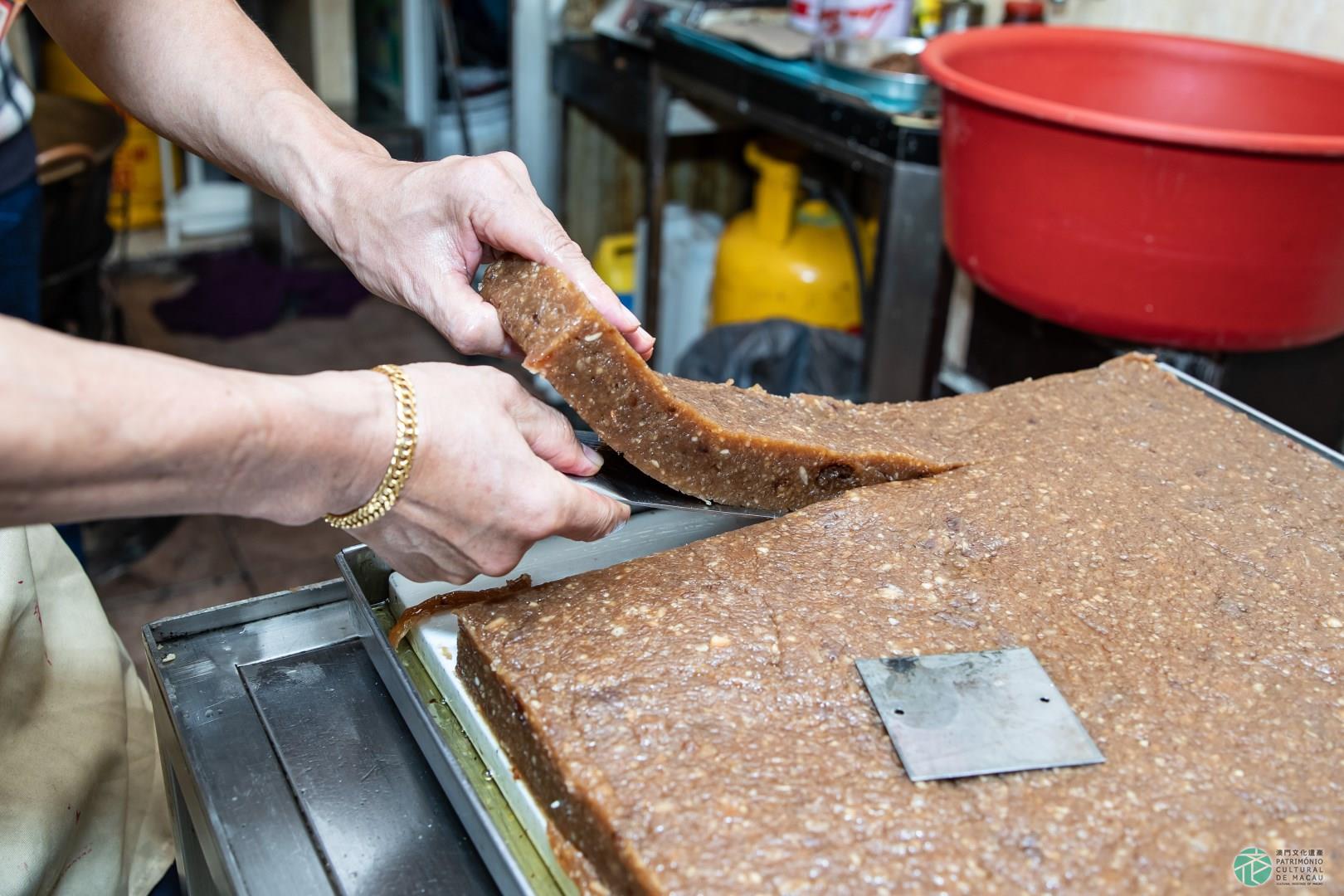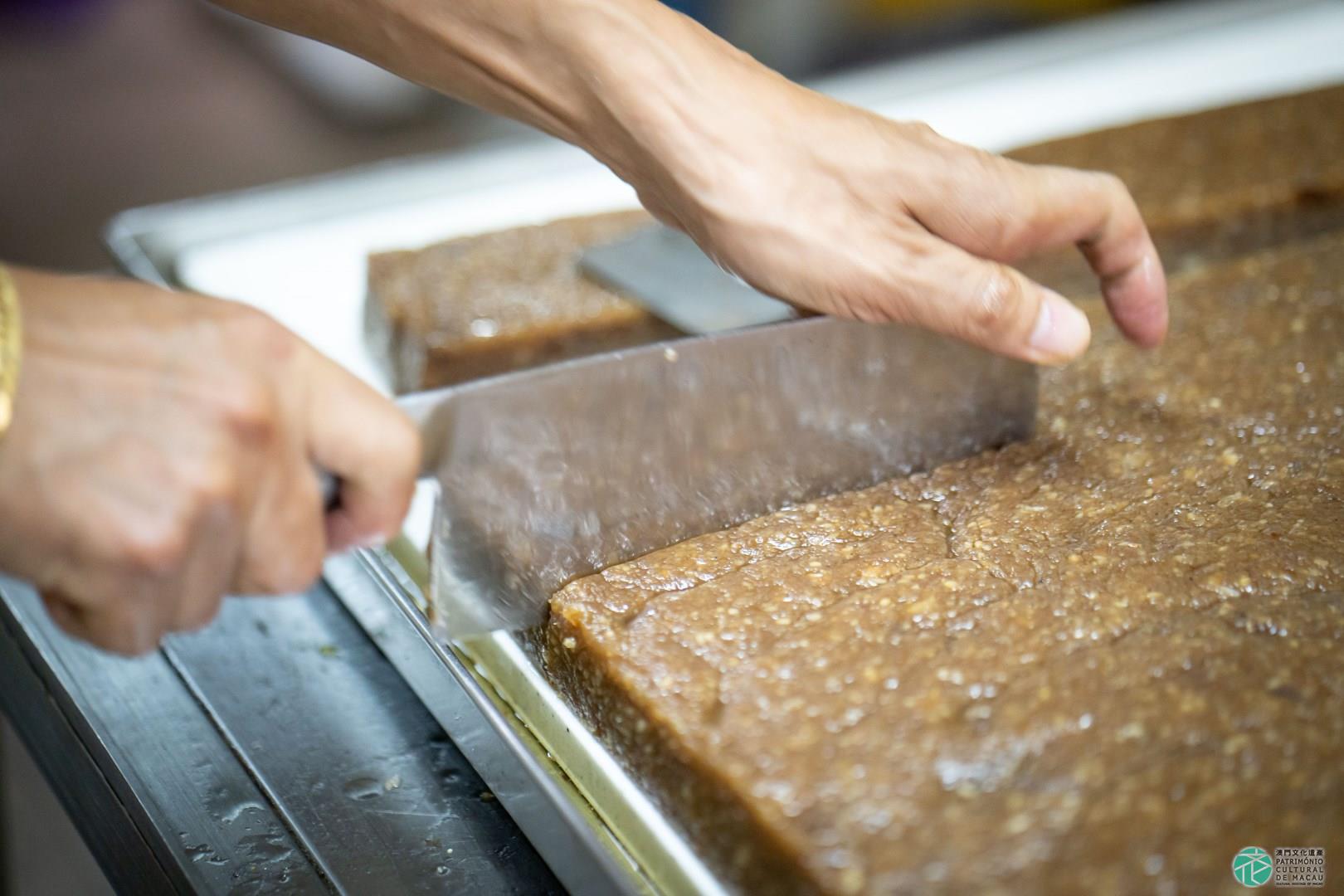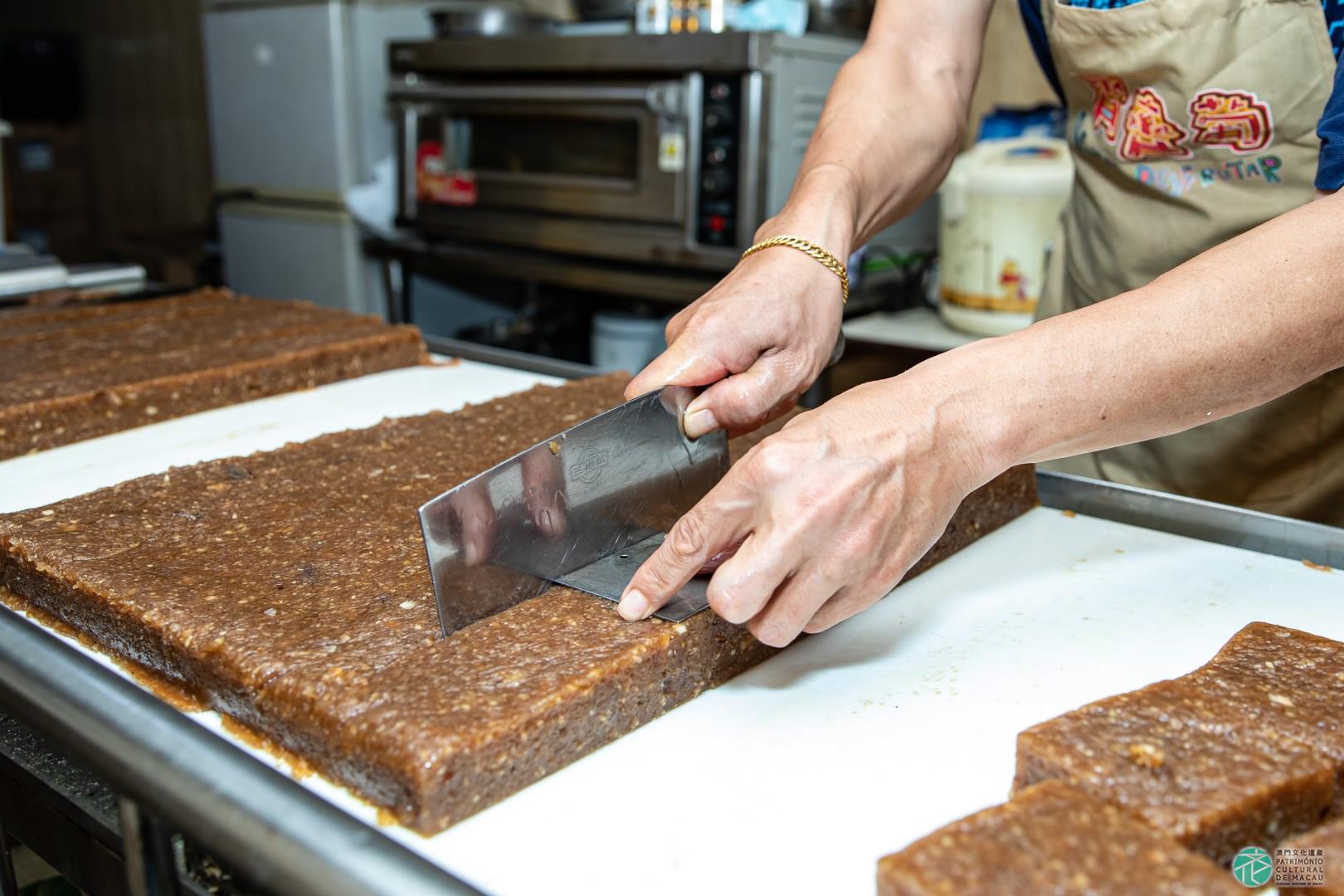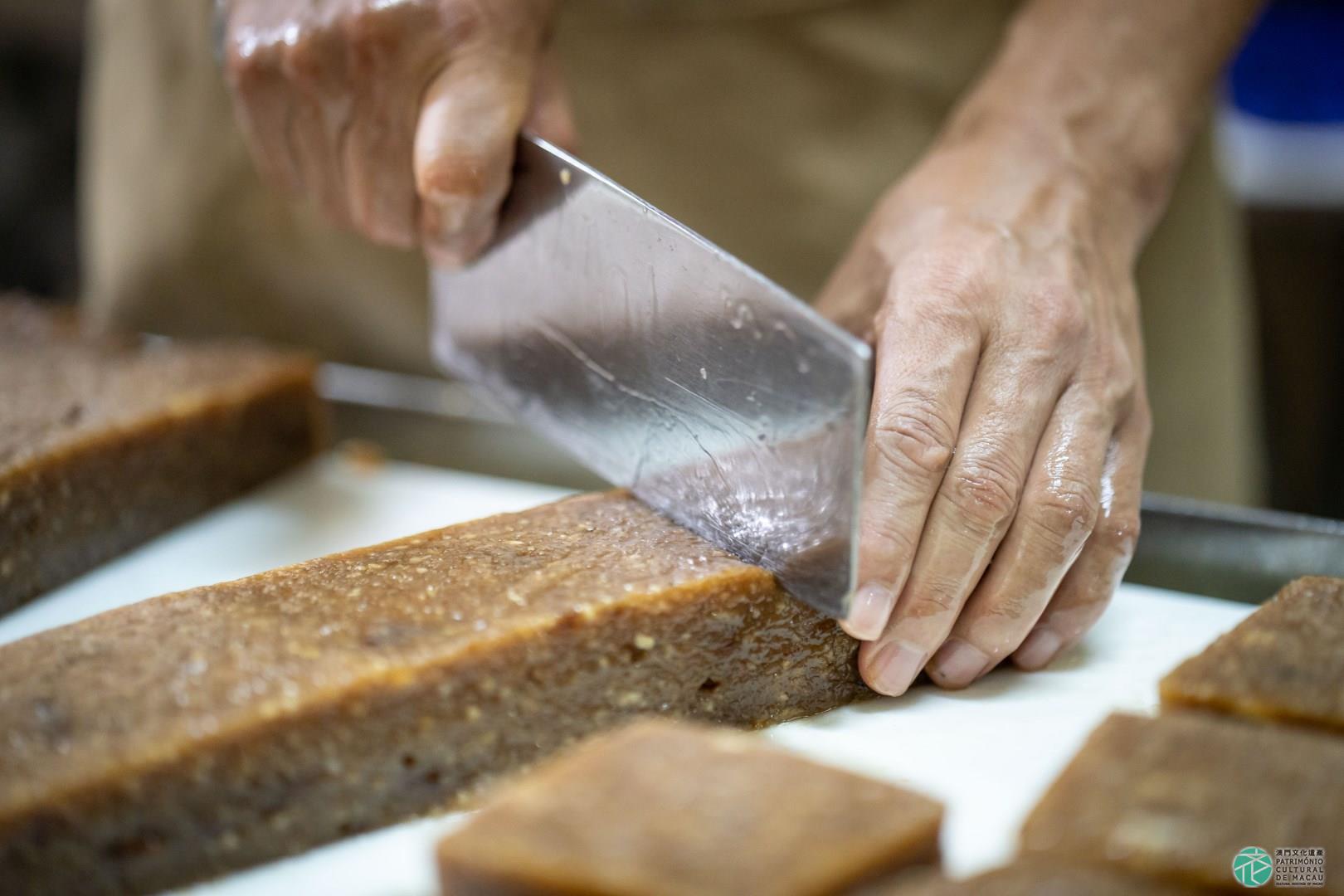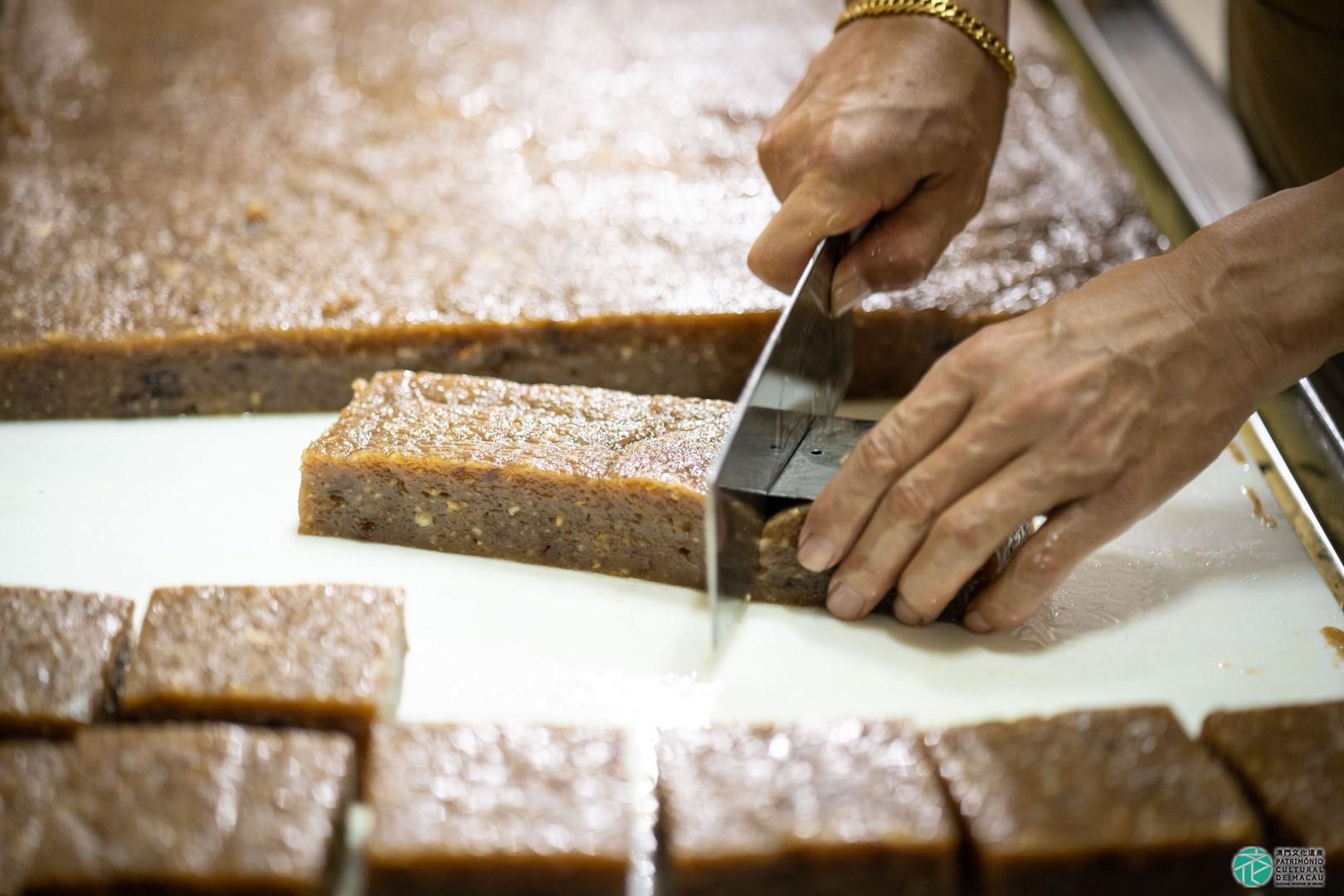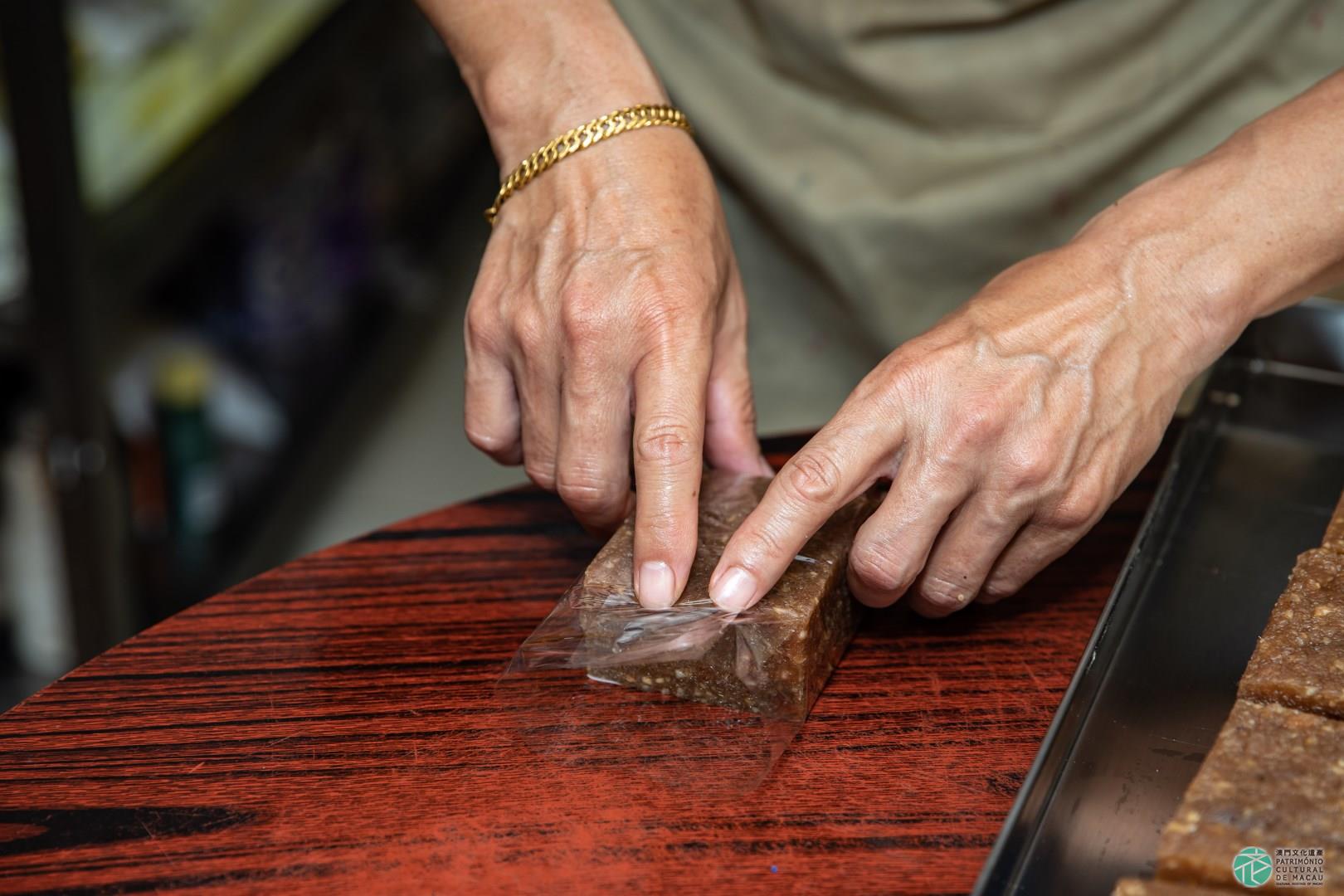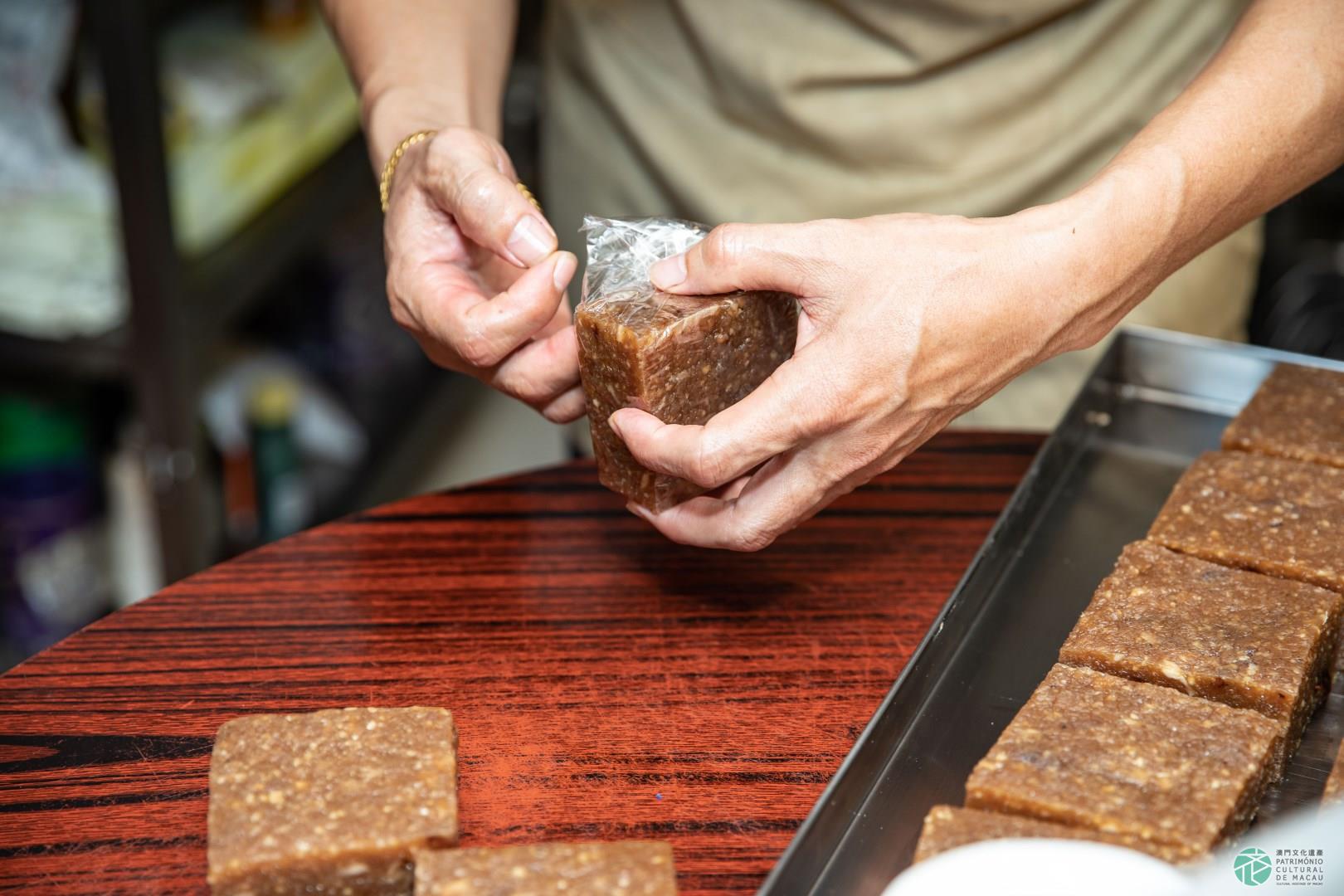Introduction:
Pastries and sweets are essential elements of the Macanese gastronomic culture in Macao. For celebrations and family reunions, the tables of the Macanese community are filled with all types of salty and sweet delicacies. The Alua is a delicacy that is typical of Christmas, with its consistency symbolically resembling the mattress of baby Jesus. Originally an Arabic confection, it was brought to Macao from India. It is made of flour, butter, almonds, Indian almonds, crystal sugar and coconut milk and milk. The making of this delicacy involves a series of processes such as kneading, fermenting, cooking, cooling and slicing. Cooking the Alua is a complex process in which fermented ingredients are put into a heated pot of milk, coconut milk and crystal sugar, with the addition of butter and Indian almonds. The mixture is then stirred continuously for 8 hours to thicken. Then the paste is cooled and sliced into square pieces. The entire process takes around three days. The Alua, usually has a color and texture similar to Chinese glutinous rice cakes, also being sweet and soft.
Conservation Status:
Like other Macanese delicacies, the Alua was originally passed on from mothers to daughters and later was recorded in cooking recipes and books. Nowadays, there are only a few people in Macao who know how to make this delicacy, with most chefs being Macanese women and master pastry chefs who acquired this skill through training. Because it is an essential item in Macanese Christmas celebrations, the Alua has in recent years been promoted by Portuguese bakeries in order to share with a growing public, also in the hope of ensuring the transmission and continuity of these techniques.
Heritage Value:
The Alua is an important local delicacy, that is much appreciated by the Macanese community during Christmas. Its origin and techniques are also a good example of the cultural exchange between the West and China, also being representative about the diversity of gastronomic culture in Macao. These techniques is also of value for the study about local gastronomic culture and the cooking skills of the Macanese community.
